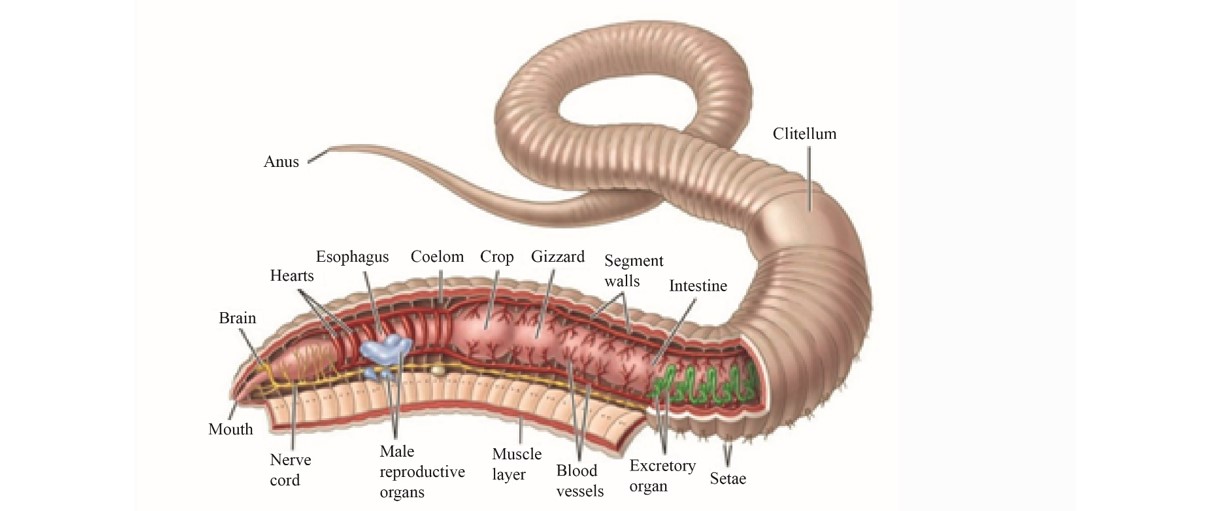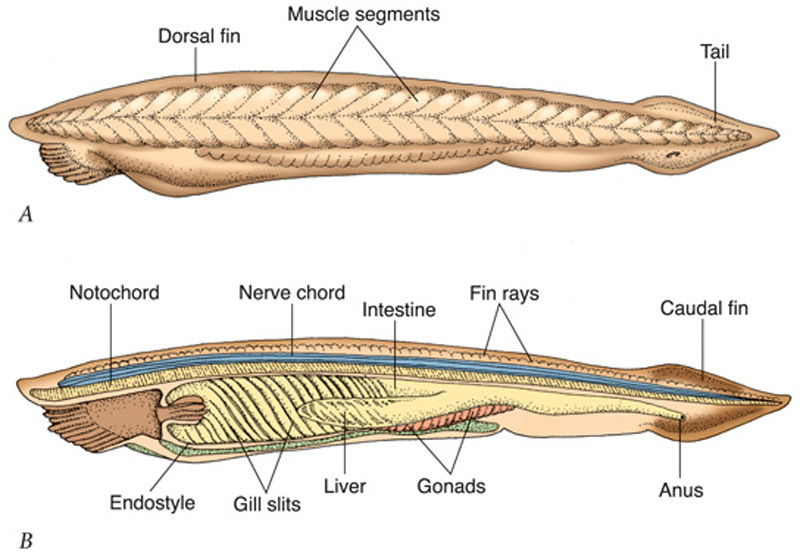Introduction to Animals
Major Characteristics That All Animals Share:
- Kingdom Animalia
- So they’ll differentiate on the phylum level
- Multicellular
- Heterotrophic
- Eukaryotic
- Lack cell walls
Different Description Types of Animals
- Level of Organization
- Body Cavity
- Number of Tissue Layers
- Segmentation
- Blastopore: (Protostome or Deuterostome)
- Cephalization
Levels of Organization:
Cells
Tissue
- Diploblastic or Triploblastic
Organs
Organ systems
Organisms
Simplest animals: just specialized cells to organs to organism
Complex animals: Cell to tissue to organ to system to organism
- Just because an animal is more complex than another does not make it a “better” animal. There is no such thing.
Differentiation of Germ Layers: (absent, two, or three)
- During embryological development, cells begin to differentiate (activate) into three layers (called germ layers)
- Endoderm: Forms digestive and respiratory systems
- Mesoderm: Forms muscular, reproductive, circulatory, and excretory systems (muscles)
- Ectoderm: Forms nervous and integumentary systems (skin/outer covering)
- Classifications:
- Diploblastic: having 2 germ layers
- Triploblastic: having 3 germ layers
- Formation of Body Cavity:
==Body Cavity:== fluid filled space between digestive tract and body wall
Coelem: complex animals have true body cavity completely lined with mesoderm
- <<In coelemates the endoderm forms a circular digestive tube that is surrounded by a thin layer of muscle<<
Psuedocoelem: some invertebrates, only partially lined with mesoderm
- <<In psuedocoelemates the endoderm forms a crescent shape digestive tube<<
Acoelomate: lack coelem between body wall and digestive tract (just a tube of flesh w/ body wall)
<<In acoelomates the endoderm forms a triangular digestive cavity<<
- ==All three germ layers are present in each one (just formed differently)==
==Advantage to having a body cavity: Have room for specialized organs==
Blastopore Classification
Blastopore: Opening in blastula
- Zygote: fertilized egg that gives rise to blastula
Blastula: hollow ball of cells that eventually folds into itself (creating the beginning of a digestive tract)

Different Groups:
- ==Protostome: blastopore gives rise to the mouth==
- invertebrates
- ==Deuterostome: blastopore gives rise to anus==
- Chordates and echinoderms (starfish)
- Body Symmetry Classification:
Radial: body parts extend outward from the center
Cnidarians and Echinodermata
Bilateral: body parts have identical left and right sides
- Platyhelminthes, Nematoda, Annelida, Mollsuca, Arthropoda, Invertebrate Chordates, and Vertebrates
Asymmetrical: no symmetry
- Porifera
Segmentation: repeating parts
Segments can become specialized
- Examples: legs, flippers, wings, etc.
Bilaterally symmetrical animals

Cephalization Classification:
- concentration of sense organs and nerve cells
Invertebrates:
Invertebrate Characteristics/Overview:
- Lack a backbone or vertebral column
- Includes 33 phyla (largest group)
Different Phyla Include:
Phylum Porifera
Phylum Cnidarian
Phylum Arthropoda
Phylum Platyhelminthes
Phylum Nematoda
Phylum Echinodermata
Phylum Annelida
Phylum Mollusca
Invertebrate Phylums and Their Individual Classifications Table:
| Phylum | Example(s) | Germ Layers | Symmetry | Cephalization | Early Development (Blastopore formation) |
|---|---|---|---|---|---|
| Porifera | Sponges | absent | asymmetrical | absent | none |
| Cnidarian | Sea Anemones | two | radial | absent | none |
| Platyhelminth-es | Flatworms | two | bilateral | present | protostome |
| Nematoda | Roundworms | three | bilateral | present | protostome |
| Annelida | Earthworms | three | bilateral | present | protostome |
| Mollusca | Snails | three | bilateral | present | protostome |
| Echinodermata | Starfish | three | radial | absent | deuterostome |
| Arthropoda (Largest Phylum) | Crabs | three | bilateral | present | protostome |
| }}(Not Phylum) Invertebrate Chordates}} | }}Tunicates}} | }}three}} | }}bilateral}} | }}absent}} | }}deuterostome}} |
| }}Vertebrates}}(Not Invertebrates) | }}Birds, Humans}} | }}three}} | }}bilateral}} | }}present}} | }}deuterostome}} |
Quick Sight List:
- Phylum Porifera: absent germ layers, asymmetrical, no cephalization, and no blastula rise
- Phylum Cnidarians: two germ layers, radial symmetry, no cephalization, and no blatstula rise
- Phylum Platyhelminthes: three germ layer, bilateral symmetry, cephalization, a protostome
- Phylum Nematoda: three germ layers, bilateral symmetry, cephalization, a protostome
- Phylum Annelida: three germ layers, bilateral symmetry, cephalization, a protostome
- Phylum Mollusca: three germ layers, bilateral symmetry, cephalization, a protostome
- Phylum Arthropoda: three germ layers, bilateral symmetry, cephalization, a protostome
- Phylum Echinodermata: three germ layers, radial symmetry, no cephalization, a deuterostome
- Invertebrate Chordates: three germ layers, bilateral symmetry, no cephalization, a deuterostome
- Vertebrates: three germ layers, bilateral symmetry, cephalization, a protostome
Relationship Between Echinodermata and Chordates:
- Invertebrates of the Phylum Echinodermata are the closest cousins to the chordates
Characteristics of All Chordates (that they will exhibit at some point in life):
- ==Dorsal hollow nerve cord==: the major cord of nerve fibers running the length of the animal’s body that can develop into the %%spinal chord%% in vertebrates
- ==Notochord==: supporting rod below the nerve cord that gives rise to the %%(intervebral disc)%% in vertebrates
- ==Tail== that extends below the anus that gives rise to the %%(tailbone)%% in vertebrates
- ==Pharyngeal pouches/sacs==: lateral sacs that branch from the pharynx of chordate embryos and may open outside as %%gill slits%% in adult fishes (vertebrates) and invertebrate chordates
@@Difference between Invertebrates and Vertebrates?@@
- Vertebrates are just chordates that have a @@backbone@@ while invertebrates lack a backbone or vertical column
Diagrams:
Invertebrate Chordates: @@Cephalochordata@@:
Body Wall.Body Cavity Diagrams:
- \
